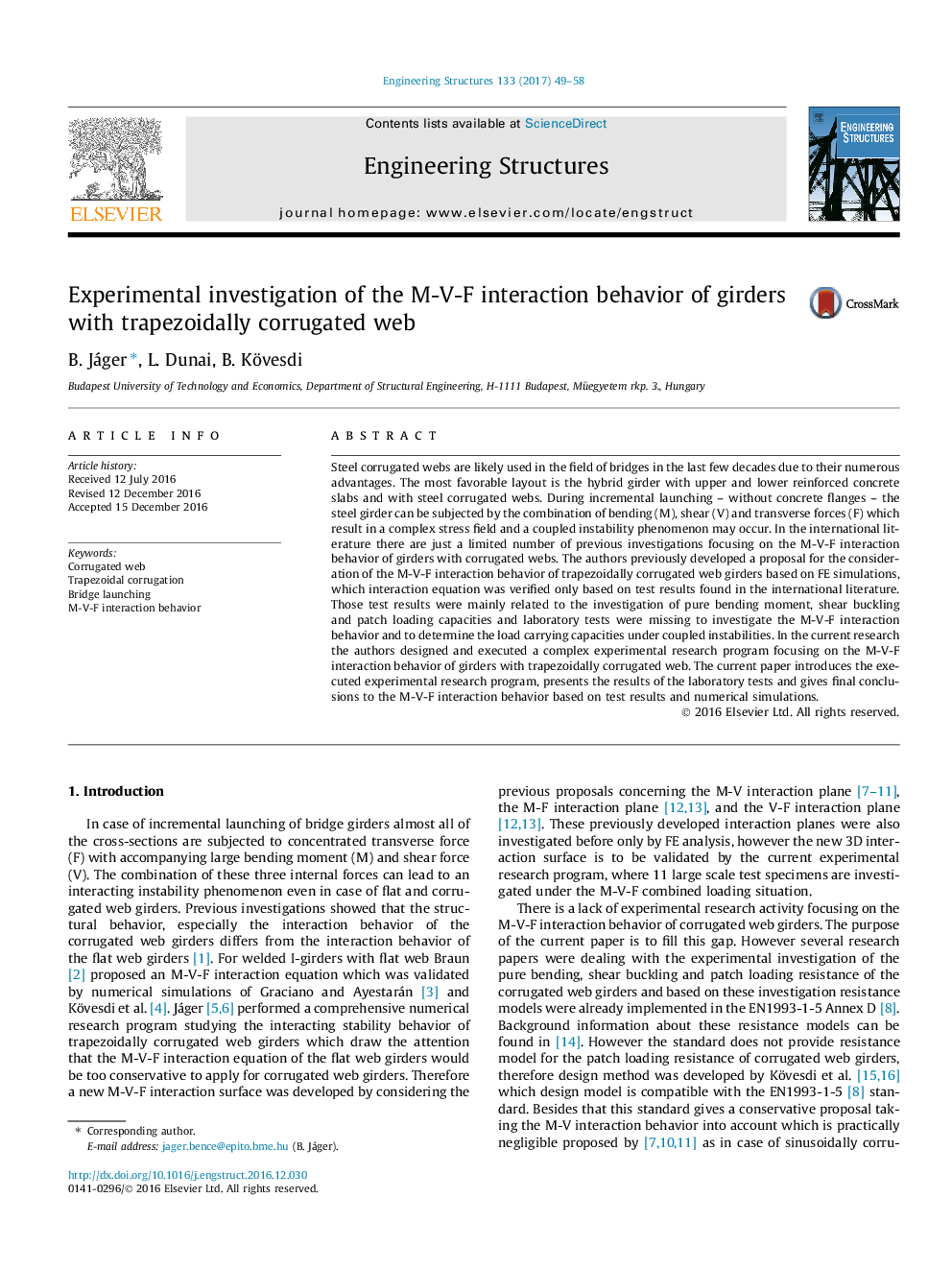| Article ID | Journal | Published Year | Pages | File Type |
|---|---|---|---|---|
| 4920369 | Engineering Structures | 2017 | 10 Pages |
Abstract
Steel corrugated webs are likely used in the field of bridges in the last few decades due to their numerous advantages. The most favorable layout is the hybrid girder with upper and lower reinforced concrete slabs and with steel corrugated webs. During incremental launching - without concrete flanges - the steel girder can be subjected by the combination of bending (M), shear (V) and transverse forces (F) which result in a complex stress field and a coupled instability phenomenon may occur. In the international literature there are just a limited number of previous investigations focusing on the M-V-F interaction behavior of girders with corrugated webs. The authors previously developed a proposal for the consideration of the M-V-F interaction behavior of trapezoidally corrugated web girders based on FE simulations, which interaction equation was verified only based on test results found in the international literature. Those test results were mainly related to the investigation of pure bending moment, shear buckling and patch loading capacities and laboratory tests were missing to investigate the M-V-F interaction behavior and to determine the load carrying capacities under coupled instabilities. In the current research the authors designed and executed a complex experimental research program focusing on the M-V-F interaction behavior of girders with trapezoidally corrugated web. The current paper introduces the executed experimental research program, presents the results of the laboratory tests and gives final conclusions to the M-V-F interaction behavior based on test results and numerical simulations.
Keywords
Related Topics
Physical Sciences and Engineering
Earth and Planetary Sciences
Geotechnical Engineering and Engineering Geology
Authors
B. Jáger, L. Dunai, B. Kövesdi,
